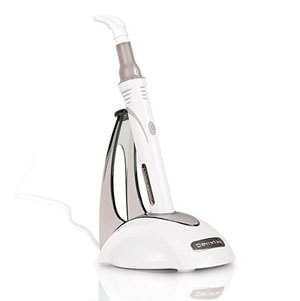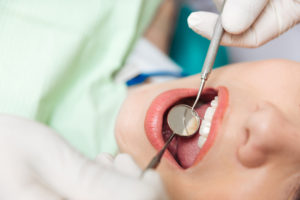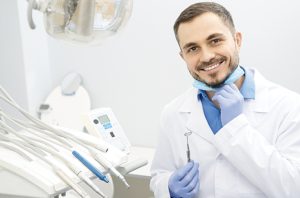Nitrous Oxide, otherwise known as “laughing gas,” is a safe and efficient conscious sedation method for both kids and adults to assist patients feel comfortable, alleviate dental anxiety, and assist in making certain dental practices easy and anxiety-free for the patients. Nitrous oxide sedation could also be used in a combination with other sedative agents.
Safety & Effectiveness of Nitrous Oxide
The American Dental Association as well as other dentistry papers have carried out research and experiments, and have discovered that the Nitrous Oxide sedation is safe for use on children and adults alike. Nitrous Oxide is administered in conjunction with Oxygen (02), through a small mask which fits over your nose.
Nitrous oxide sedation is probably the safest sedative in dental treatment and is well tolerated in most patients. It has a quick onset, is flexible, may be adjusted in a variety of concentration levels and is non-allergenic. The patient continues to be fully aware and retains all natural impulses when respirating nitrous oxide/oxygen. A patient will have the ability of answering the questions or demands during the procedure.
Before managing the Nitrous Oxide sedation, your dentist will examine the information regarding this sedation alternative, and answer any questions you might have.
Preparing for an Appointment Using Nitrous Oxide
Usually, a distinct appointment is slated for patients who are going to receive Nitrous Oxide sedation throughout their process. Patients are recommended to have little or no food for two hours prior to the dental visit due to the fact that sometimes a full stomach may be causing nausea or vomiting.
Fasting
You can have a light dinner, such as jelly, broth or bread, and a drink two hours prior to the following procedure. After that, you must have nothing to eat and drink until after the operation.
Patients or parents are instructed to notify the dentist whether the patient is suffering any breathing condition that makes respiration through the nose challenging. A nasal congestion or other breathing issues restrict the efficacy of nitrous oxide sedation.
It is also important to inform your dentist about any medicines you or your child might be taking, or whether there is any chance to view your medical record from your last visit.
During the procedure
Nitrous oxide sedation is provided in the dental seat. You will breathe in the sedation gas via a small nose piece that is sitting on your nose. It shall not cover up your mouth.
The nitrous oxide sedation makes you feel drowsy and comfortable. You will still be conscious of what’s going on around them, but you’re going to feel dreamy and floaty, warm, and have numbness in your hands and feet.
While providing the nitrous oxide sedation, the team will be monitoring your level of sedation to guarantee that you can still collaborate and then follow the verbal directives.
The dental therapy shall be carried out. Local anesthesia doses may also be offered so that you don’t feel the pain. These can be provided while you are sedated.
After the procedure
You are going to recover from the impacts of the nitrous oxide sedation extremely quickly when your dental therapy has been finished. You will be monitored for a short time after the sedation.
Some people may feel a little sick and tired or nauseous. If you feel sick and tired or puke, have a little water to drink. Or try clear fluids, such as watered-down fruit drink, or icy poles, gel or transparent soup to assist in keeping you hydrated.
Effects of Nitrous Oxide Sedation
Patients are being urged to relax and lie down in the dental chair to begin the appointment. The dentist will position a gas mask over the nose of the patient, and will switch on the gas. Effects of Nitrous Oxide sedation are almost instantaneous. You are going to smell a slight, sweet scent and experience a feeling of well-being and can enjoy the relaxing atmosphere.
Since it may create a sense of frivolity or joy, it is frequently referred to as the laughing gas. Patients will occasionally report the sensation of being “dreamy” and their hands and feet may feel “prickly”.
Nitrous Oxide sedation also increases the threshold for pain and might even get the time to appear to pass by quickly. Unless you or your child are concerned about the sights, noises or feelings of dental therapy, you may react more optimistically with the usage of nitrous oxide/oxygen sedation.
The impact of Nitrous Oxide sedation is worn off extremely quickly, usually in just a few minutes after the stream of gas has been stopped. Adult patients that select the Nitrous Oxide sedation for the duration of their dental therapy are able to drive on their own home or even come back to work after a short examination period in the office. Kids are also monitored for a short period of time, and they will be able to go back to their regular routine straight away.
Nitrous Oxide sedation should not be confused with the IV Sedation, in which the patient will receive a general anaesthetic through an IV and are “asleep” throughout the procedure.
Side Effects
The CDA are reporting that only a small proportion of patients will experience negative side effects, which may arise if the nitrous concentration is too high or if the quantity breathed in rapidly changes. Seek advice from your dentist to identify the best sedative that should be used throughout a dental visit.
When the nitrous oxide sedation has been switched off, a patient has to receive oxygen for a period ending at least five minutes to avoid a headache. The oxygen cleanses any leftover gas from the lungs and at the same time helps the patient to come to be alert and awake.
When to see a doctor
Contact your medical treatment dentist if you throw up more than two times in the first hour after the treatment, or if you have any questions regarding healing.
















